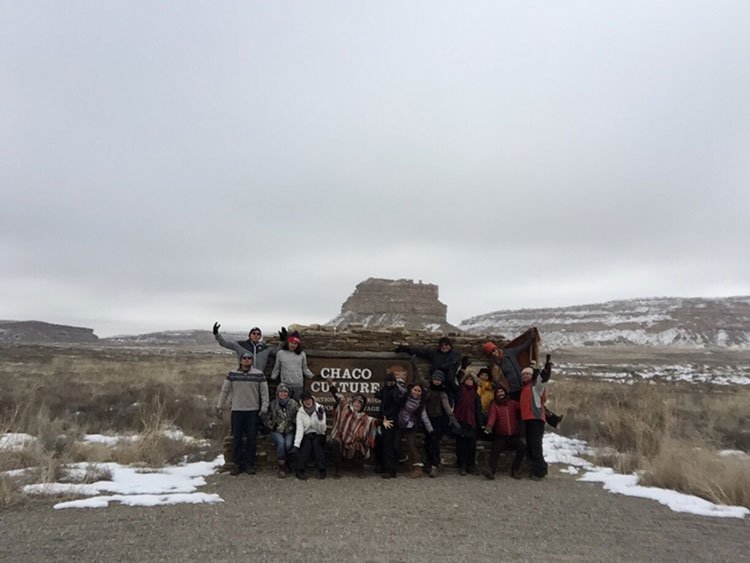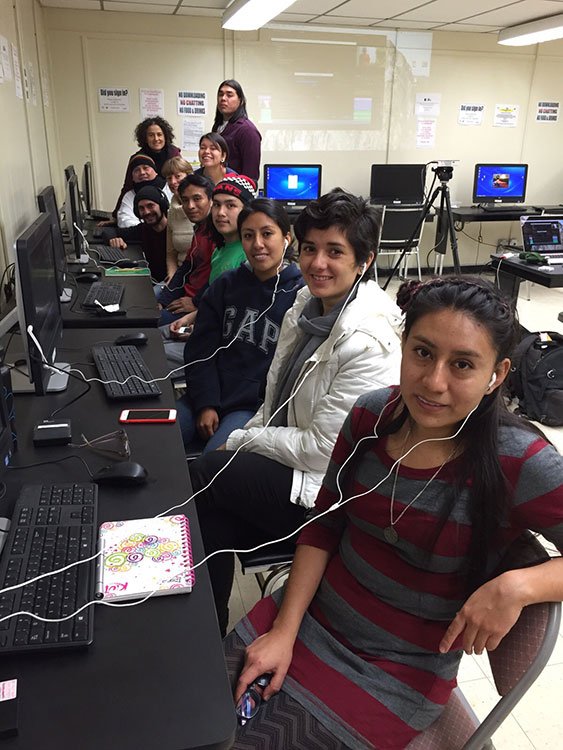Being at Chaco during the wintertime is a treat for any visitor, but the experience took on a new meaning for a group of native youth and elders who visited the park this past January 2016. The group was part of a cultural exchange program that has brought Pueblo and Maya youth together at Chaco and in the Yucatan for the past 5 years. The group’s name, Yakanal, joins the Keres and Yucatec Mayan words for corn – the sacred plant that is common to so many native cultures of the Americas. The youth are active in their efforts to strengthen their cultural identity through intergenerational learning as well as direct exposure to their native languages and ancestral knowledge systems in their homelands. These compatible efforts are engaging native youth in the American Southwest and Mesoamerica in actions that directly benefit their communities, such as documentation and preservation of traditional knowledge (including native languages, traditional dance, cultural stories, sustainable living practices, and ancestral technologies). As a result of their involvement in Yakanal, group members have focused on learning their native languages, are tending native gardens, and are bringing to bear the entirety of their cultural identity on their mainstream educational experiences. Visiting Chaco and other ancestral sites of the Pueblos contributes a very important aspect to the youth’s experience by providing direct cultural connection with these very special places.
The goals of Yakanal are:
• To strengthen indigenous youth cultural identity by re-engaging participants with traditional knowledge and practice;
• To foster an environment of intergenerational learning among youth and elders/cultural bearers and increase leadership potential in youth;
• To re-connect cultures that have been historically linked through trade routes and migration stories, namely, Pueblo and Maya.
The project goals address the root problem of native youth isolation from other native cultures and the loss of native language and cultural identity. There is a need to strengthen cultural identity in youth and to provide elders opportunities to share their traditional knowledge in the context of ancestral lands. Indigenous youth sit at the confluence of where the past joins with present and future, and in collaboration with tribal elders, the cultural exchange program creates experiences for youth that celebrate Indigenous culture while exposing them to new knowledge. Building capacity in youth for their future role as essential culture and tradition bearers may not just mean preparing them to walk in two worlds, but also preparing them for the “one world” of tomorrow by ensuring that they feel strong in their Indigenous cultures and confident in engaging with other cultures.
The cultural exchange program rests on the experience and lessons learned from four previous gatherings; the first in 2011 at Chaco Culture National Historical Park in New Mexico, the second in 2012 at the Maya U Yits Ka’an Ecological School in Maní, Yucatán, México, the third in 2014 at Aztec Ruins National Monument and Laguna Pueblo in New Mexico, and the fourth in Zací, Valladolid, Yucatán, México. One hundred and seventy individuals participated in past cultural exchanges, with a core group of Pueblo and Maya youth and elders returning each time. The most recent gathering brought youth to Laguna Pueblo and Chaco to participate in a Media Training program that allowed the youth to edit their own footage taken during prior cultural exchange gatherings towards the development of a short video on the importance of water from cultural and preservation perspectives.



